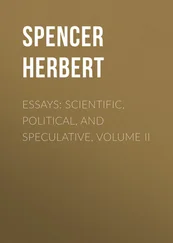| Mercury. |
Venus. |
Earth. |
Mars. |
Jupiter. |
Saturn. |
Uranus. |
| 1⁄ 360 |
1⁄ 253 |
1⁄ 289 |
1⁄ 127 |
1⁄ 11·4 |
1⁄ 6·4 |
1⁄ 10·9 |
|
|
1 Satellite. |
2 Satellites. |
4 Satellites. |
8 Satellites, and three rings |
4 Satellites. |
Thus taking as our standard of comparison the Earth with its one moon, we see that Mercury, in which the centrifugal force is relatively less, has no moon. Mars, in which it is relatively much greater, has two moons. Jupiter, in which it is far greater, has four moons. Uranus, in which it is greater still, has certainly four, and more if Herschel was right. Saturn, in which it is the greatest, being nearly one-sixth of gravity, has, including his rings, eleven attendants. The only instance in which there is nonconformity with observation, is that of Venus. Here it appears that the centrifugal force is relatively greater than in the Earth; and, according to the hypothesis, Venus ought to have a satellite. Respecting this anomaly several remarks are to be made. Without putting any faith in the alleged discovery of a satellite of Venus (repeated at intervals by five different observers), it may yet be contended that as the satellites of Mars eluded observation up to 1877, a satellite of Venus may have eluded observation up to the present time. Merely naming this as possible, but not probable, a consideration of more weight is that the period of rotation of Venus is but indefinitely fixed, and that a small diminution in the estimated angular velocity of her equator would bring the result into congruity with the hypothesis. Further, it may be remarked that not exact, but only general, congruity is to be expected; since the process of condensation of each planet from nebulous matter can scarcely be expected to have gone on with absolute uniformity: the angular velocities of the superposed strata of nebulous matter probably differed from one another in degrees unlike in each case; and such differences would affect the satellite-forming tendency. But without making much of these possible explanations of the discrepancy, the correspondence between inference and fact which we find in so many planets, may be held to afford strong support to the Nebular Hypothesis.
Certain more special peculiarities of the satellites must be mentioned as suggestive. One of them is the relation between the period of revolution and that of rotation. No discoverable purpose is served by making the Moon go round its axis in the same time that it goes round the Earth: for our convenience, a more rapid axial motion would have been equally good; and for any possible inhabitants of the Moon, much better. Against the alternative supposition, that the equality occurred by accident, the probabilities are, as Laplace says, infinity to one. But to this arrangement, which is explicable neither as the result of design nor of chance, the Nebular Hypothesis furnishes a clue. In his Exposition du Système du Monde , Laplace shows, by reasoning too detailed to be here repeated, that under the circumstances such a relation of movements would be likely to establish itself.
Among Jupiter's satellites, which severally display these same synchronous movements, there also exists a still more remarkable relation. "If the mean angular velocity of the first satellite be added to twice that of the third, the sum will be equal to three times that of the second;" and "from this it results that the situations of any two of them being given, that of the third can be found." Now here, as before, no conceivable advantage results. Neither in this case can the connexion have been accidental: the probabilities are infinity to one to the contrary. But again, according to Laplace, the Nebular Hypothesis supplies a solution. Are not these significant facts?
Most significant fact of all, however, is that presented by the rings of Saturn. As Laplace remarks, they are, as it were, still extant witnesses of the genetic process he propounded. Here we have, continuing permanently, forms of aggregation like those through which each planet and satellite once passed; and their movements are just what, in conformity with the hypothesis, they should be. "La durée de la rotation d'une planète doit donc être, d'après cette hypothèse, plus petite que la durée de la révolution du corps le plus voisin qui circule autour d'elle," says Laplace. And he then points out that the time of Saturn's rotation is to that of his rings as 427 to 438—an amount of difference such as was to be expected. [19]
Respecting Saturn's rings it may be further remarked that the place of their occurrence is not without significance.
Rings detached early in the process of concentration, consisting of gaseous matter having extremely little power of cohesion, can have little ability to resist the disruptive forces due to imperfect balance; and, therefore, collapse into satellites. A ring of a denser kind, whether solid, liquid, or composed of small discrete masses (as Saturn's rings are now concluded to be), we can expect will be formed only near the body of a planet when it has reached so late a stage of concentration that its equatorial portions contain matters capable of easy precipitation into liquid and, finally, solid forms. Even then it can be produced only under special conditions. Gaining a rapidly-increasing preponderance as the gravitative force does during the closing stages of concentration, the centrifugal force cannot, in ordinary cases, cause the leaving behind of rings when the mass has become dense. Only where the centrifugal force has all along been very great, and remains powerful to the last, as in Saturn, can we expect dense rings to be formed.
We find, then, that besides those most conspicuous peculiarities of the Solar System which first suggested the theory of its evolution, there are many minor ones pointing in the same direction. Were there no other evidence, these mechanical arrangements would, considered in their totality, go far to establish the Nebular Hypothesis.
From the mechanical arrangements of the Solar System, turn we now to its physical characters; and, first, let us consider the inferences deducible from relative specific gravities.
The fact that, speaking generally, the denser planets are the nearer to the Sun, has been by some considered as adding another to the many indications of nebular origin. Legitimately assuming that the outermost parts of a rotating nebulous spheroid, in its earlier stages of concentration, must be comparatively rare; and that the increasing density which the whole mass acquires as it contracts, must hold of the outermost parts as well as the rest; it is argued that the rings successively detached will be more and more dense, and will form planets of higher and higher specific gravities. But passing over other objections, this explanation is quite inadequate to account for the facts. Using the Earth as a standard of comparison, the relative densities run thus:—
| Neptune |
Uranus. |
Saturn. |
Jupiter. |
Mars. |
Earth. |
Venus. |
Mercury. |
Sun. |
| 0·17 |
0·25 |
0·11 |
0·23 |
0·45 |
1·00 |
0·92 |
1·26 |
0·25 |
Two insurmountable objections are presented by this series. The first is, that the progression is but a broken one. Neptune is denser than Saturn, which, by the hypothesis, it ought not to be. Uranus is denser than Jupiter, which it ought not to be. Uranus is denser than Saturn, and the Earth is denser than Venus—facts which not only give no countenance to, but directly contradict, the alleged explanation. The second objection, still more manifestly fatal, is the low specific gravity of the Sun. If, when the matter of the Sun filled the orbit of Mercury, its state of aggregation was such that the detached ring formed a planet having a specific gravity equal to that of iron; then the Sun itself, now that it has concentrated, should have a specific gravity much greater than that of iron; whereas its specific gravity is only half as much again as that of water. Instead of being far denser than the nearest planet, it is but one-fifth as dense.
Читать дальше












